Welcome to this detailed tutorial where I show you how to professionally edit your photos with Lightroom mobile. In this tutorial, you will learn how to use the app on your smartphone to edit images, improve the quality of your photos, and even work with synchronizations between Lightroom and Lightroom mobile. You will be surprised by how many features are available to you, which you may already know from the desktop version. Let's start this exciting journey into photo editing!
Key Takeaways
- Lightroom mobile offers numerous features comparable to the desktop version.
- You can use various tools like the correction brush, gradient filter, and tone curve to creatively edit your images.
- Synchronize your edits between Lightroom mobile and the desktop version to work more efficiently.
- Pay attention to the color accuracy of your device to achieve precise results.
Step-by-Step Guide
To edit images in Lightroom mobile, follow these simple steps:
First, open the Lightroom mobile app on your smartphone. To enter editing mode, tap on the module that currently shows the rating and select "Edit". This is the first step into the world of creative photo editing.
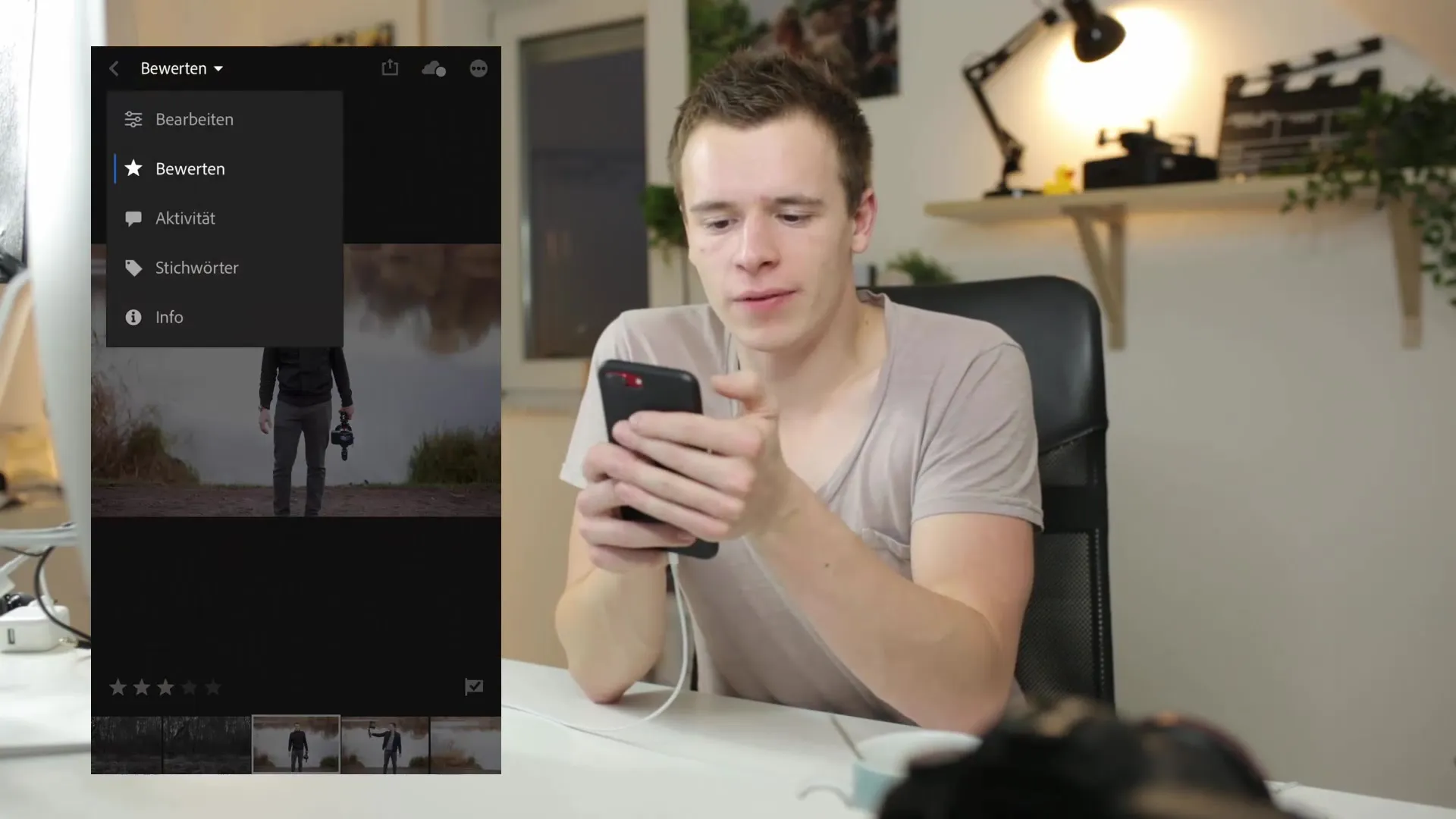
Now you can choose the images you want to edit. You also have the option to check the image activities to see if the images have been shared or not. Additionally, you can assign keywords to help organize your images better. Use this function to later specifically filter for certain images.
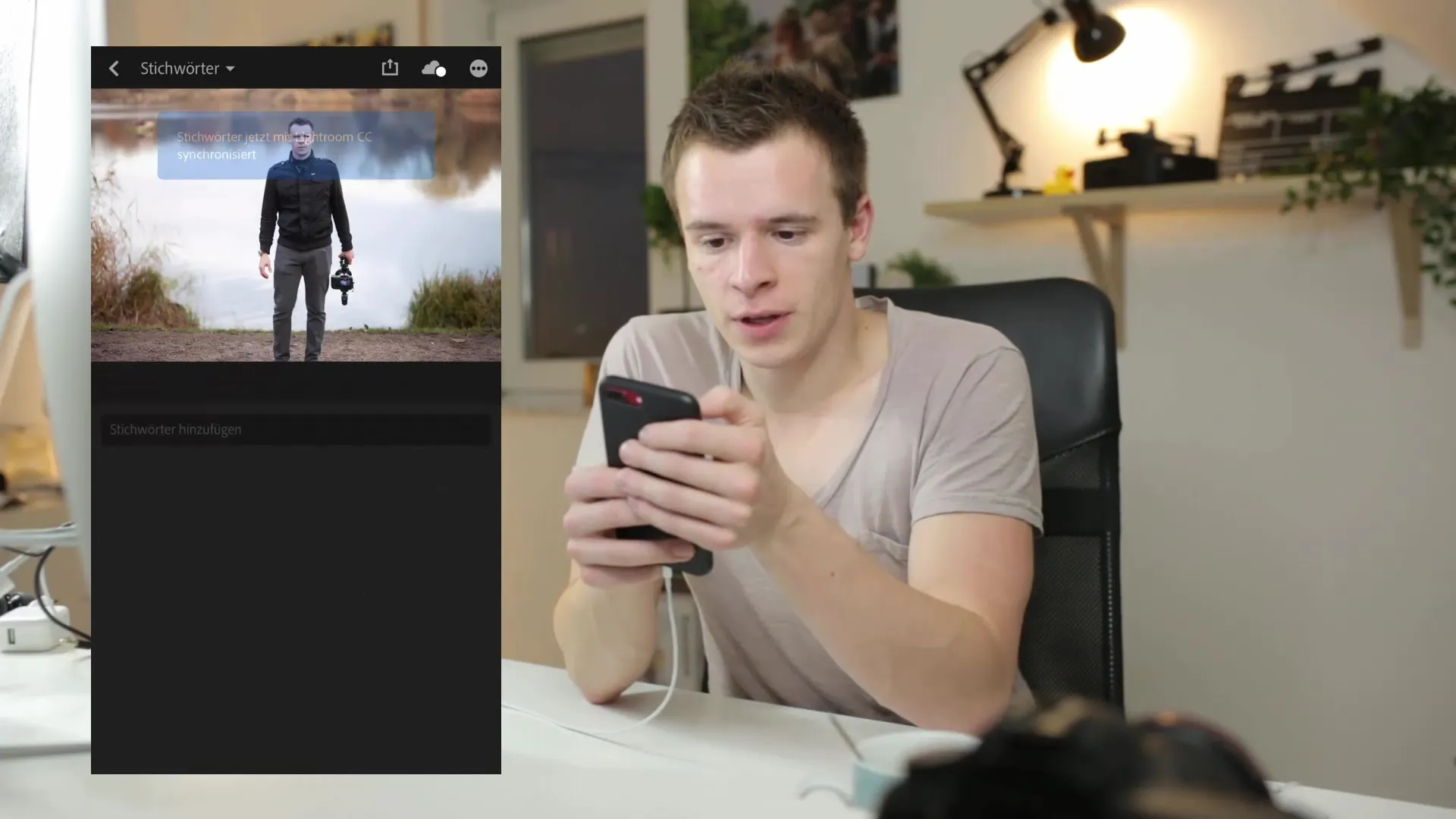
An important part of editing in Lightroom mobile is understanding the various tools available to you. You can tap on the plus sign in the upper left corner to select various editing tools like the correction brush, radial filter, and gradient filter. These tools allow you to selectively edit your images. You will find that the interface is intuitive and offers you many possibilities to realize your vision.
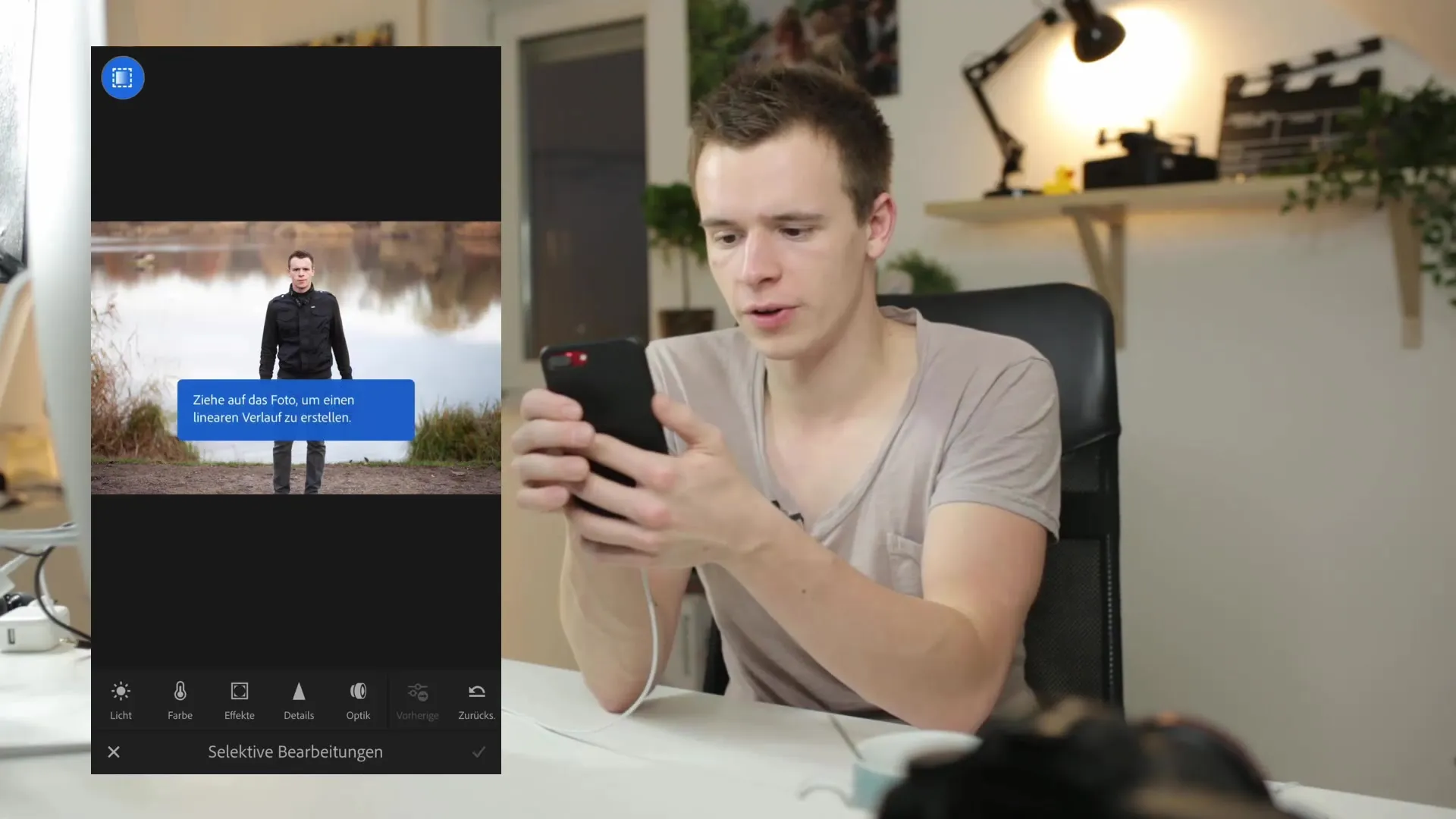
Now let's move on to light. If you want to adjust the exposure, you can use the exposure slider to darken or lighten the image. Simply drag the exposure slider to the left or right to achieve the desired change. You can also adjust the contrast, highlights, shadows, whites, and blacks to further refine the image.
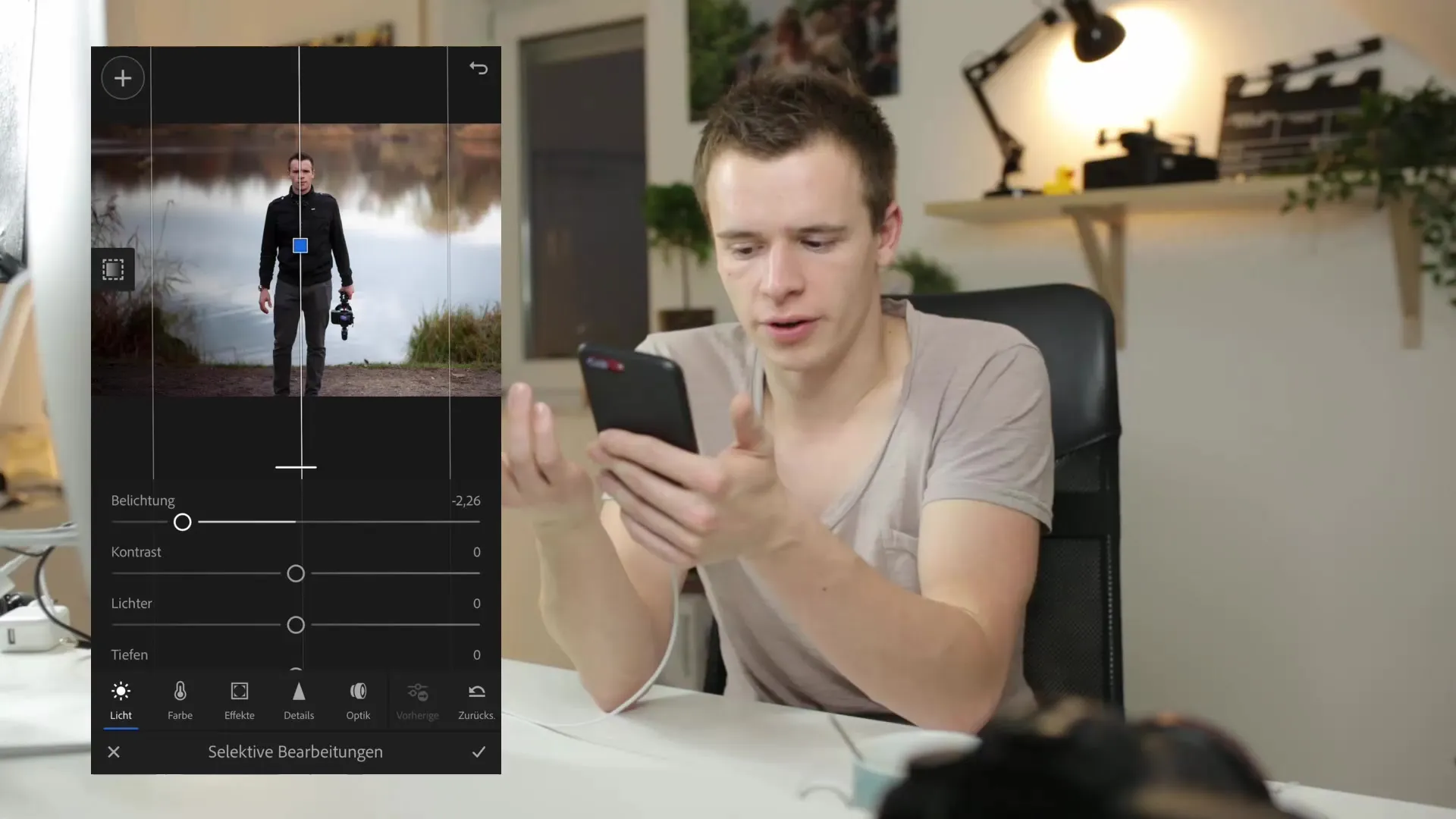
In addition to exposure, you can also use the tone curve to gain precise control over the light in your image. Here, you can work on the red, green, and blue color channels specifically. Working with the tone curve allows you to achieve fine adjustments and creative effects that make your image more vibrant.
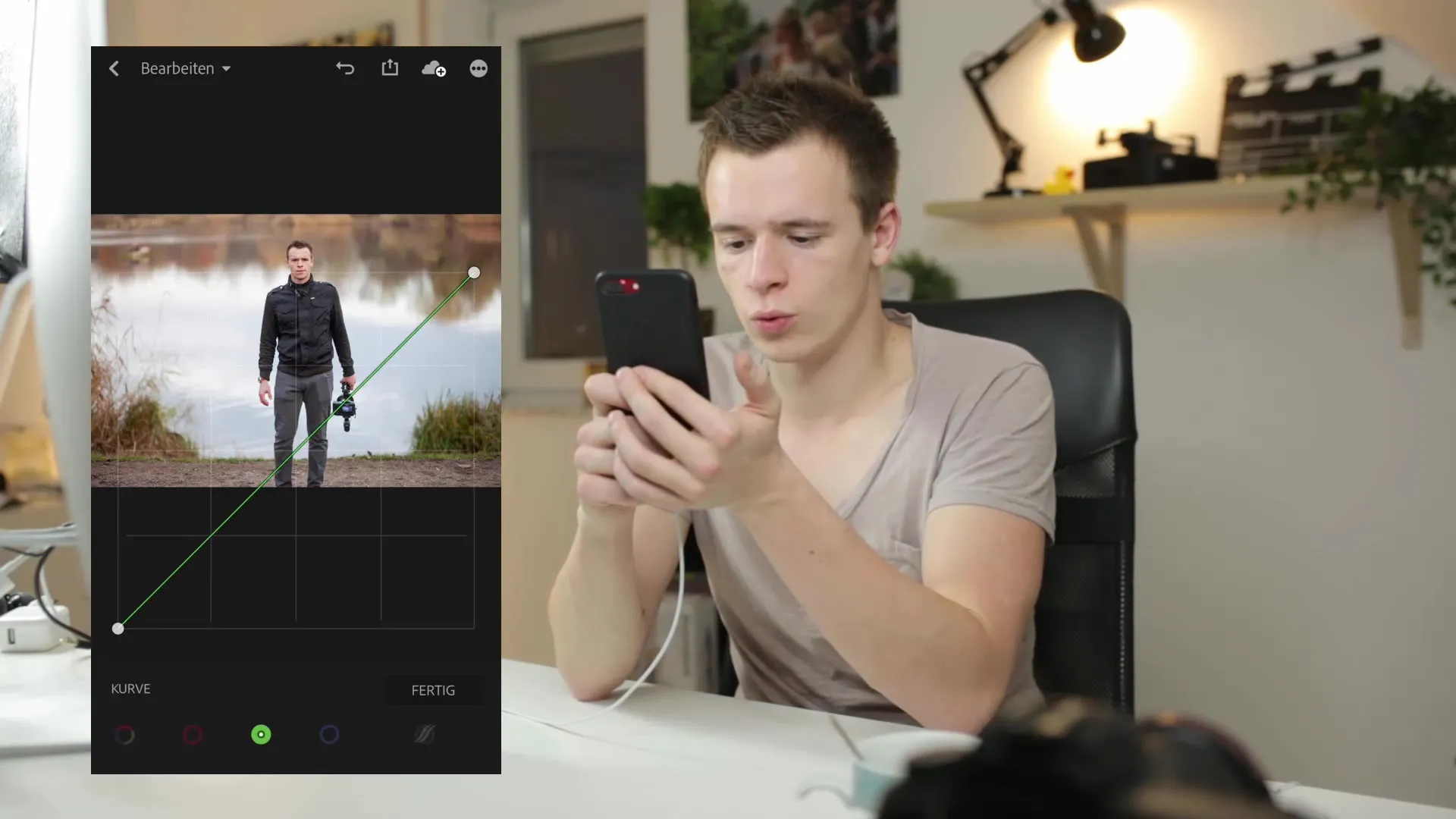
For more dynamics in your images, you can also adjust the white balance. Experiment with the saturation and clarity sliders to achieve the desired look. These adjustments allow you to optimize the colors and sharpness of your images.
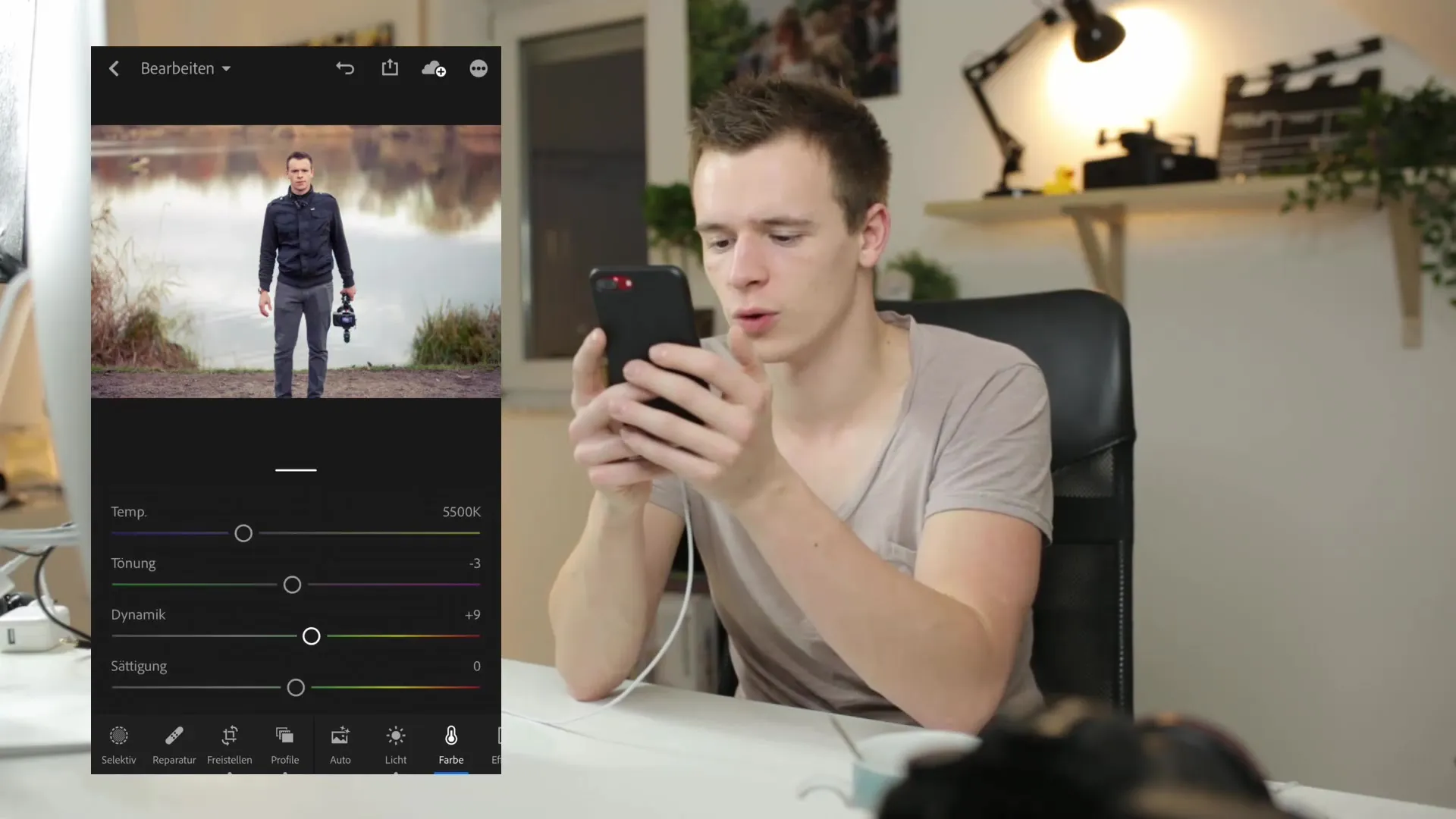
Another helpful feature in Lightroom mobile is the ability to activate lens correction. This helps minimize distortions in your images and ensures a balanced overall image. Even though the number of available options is not as extensive as in the desktop version, the basic functions are still available and very useful.
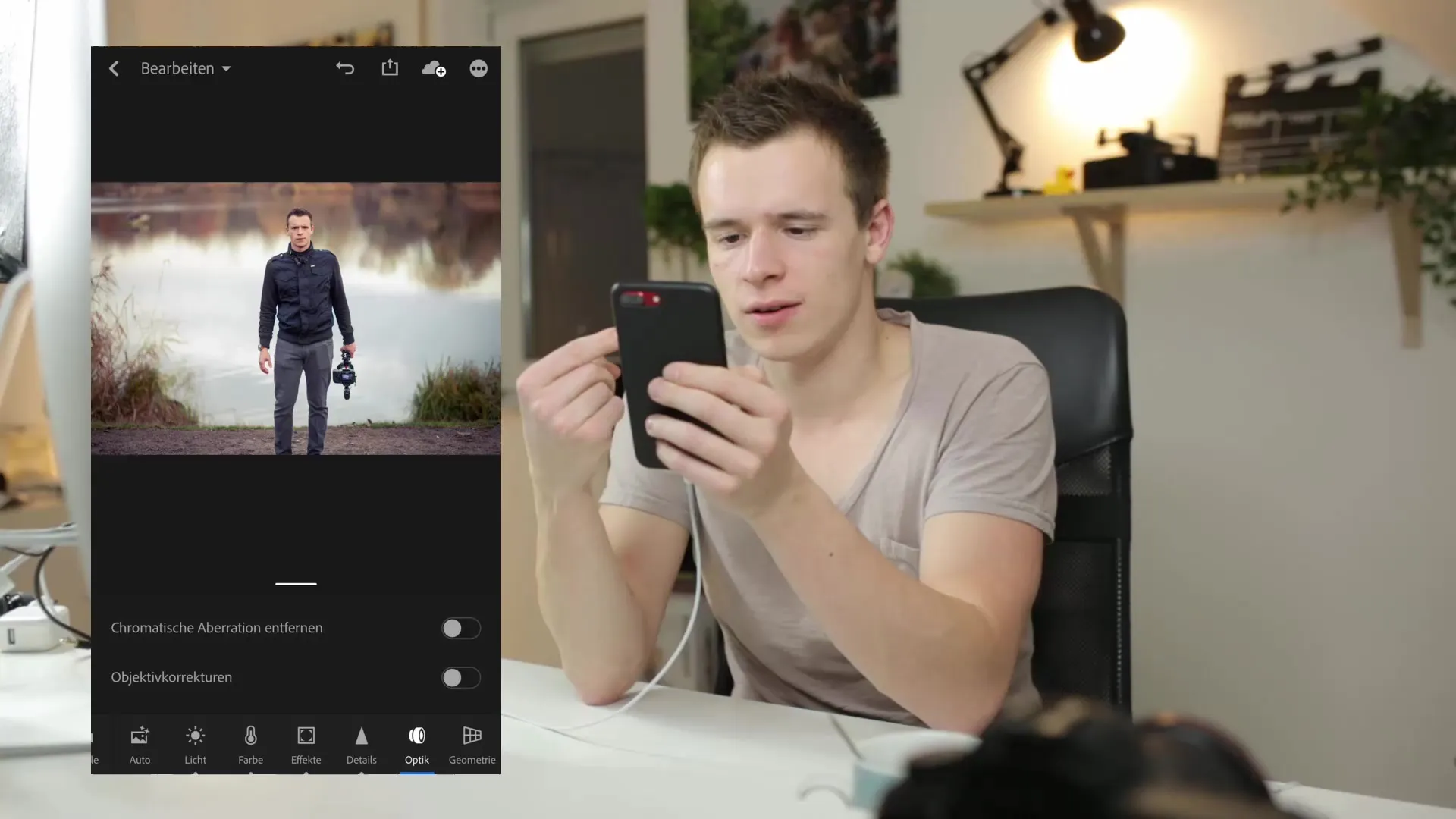
In addition to basic editing, you can also work with the geometry functions. These allow you to automatically adjust the perspective of your images. Use the "Upright" function to correct the vertical and horizontal lines in your image. This feature is especially helpful for architecture and landscape photography.
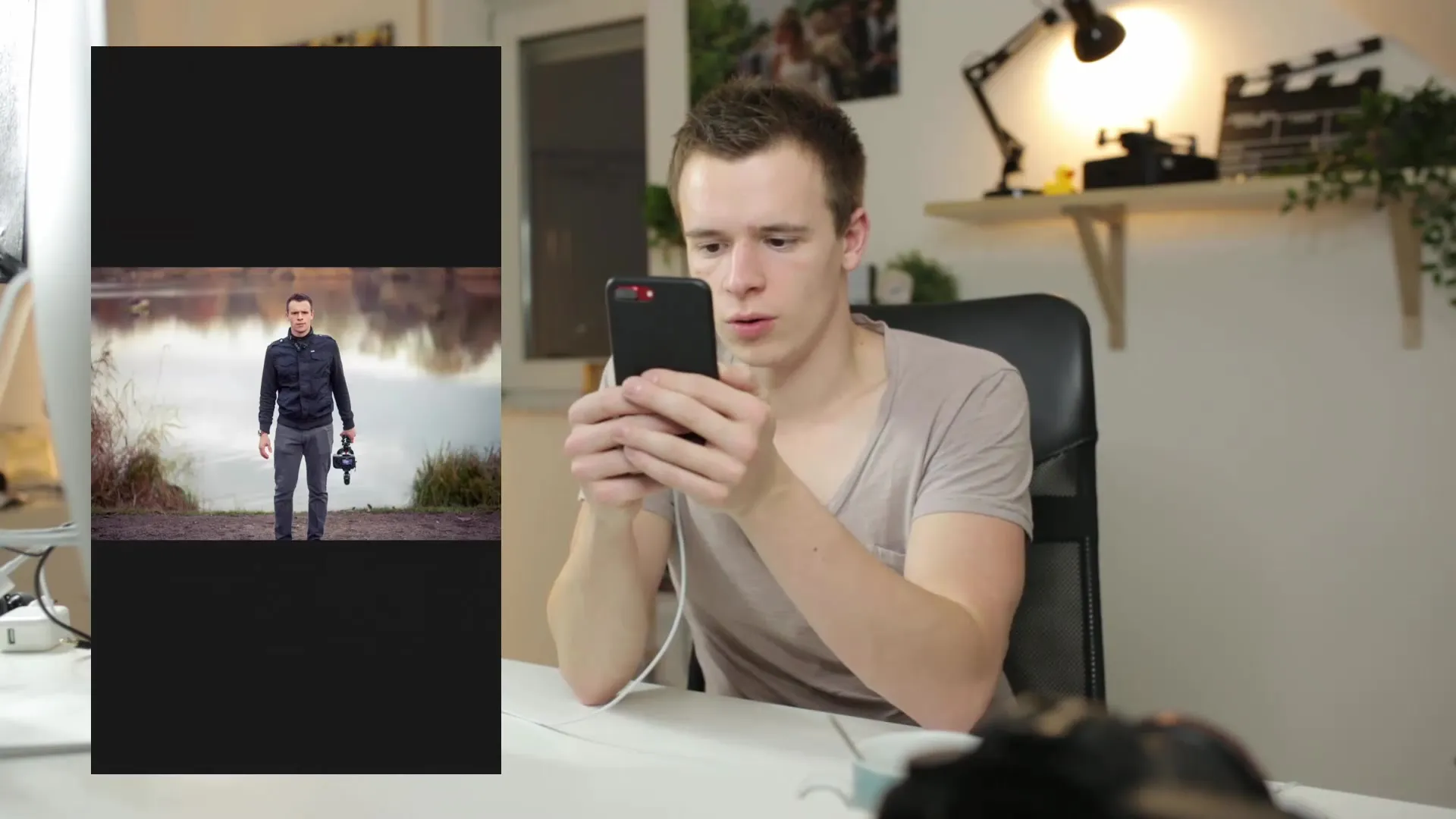
If you are working with a specific style or preset, you have the option to create presets or activate synchronization with your Lightroom presets. This way you can easily apply your own editing recipe to multiple images and significantly speed up your workflow.
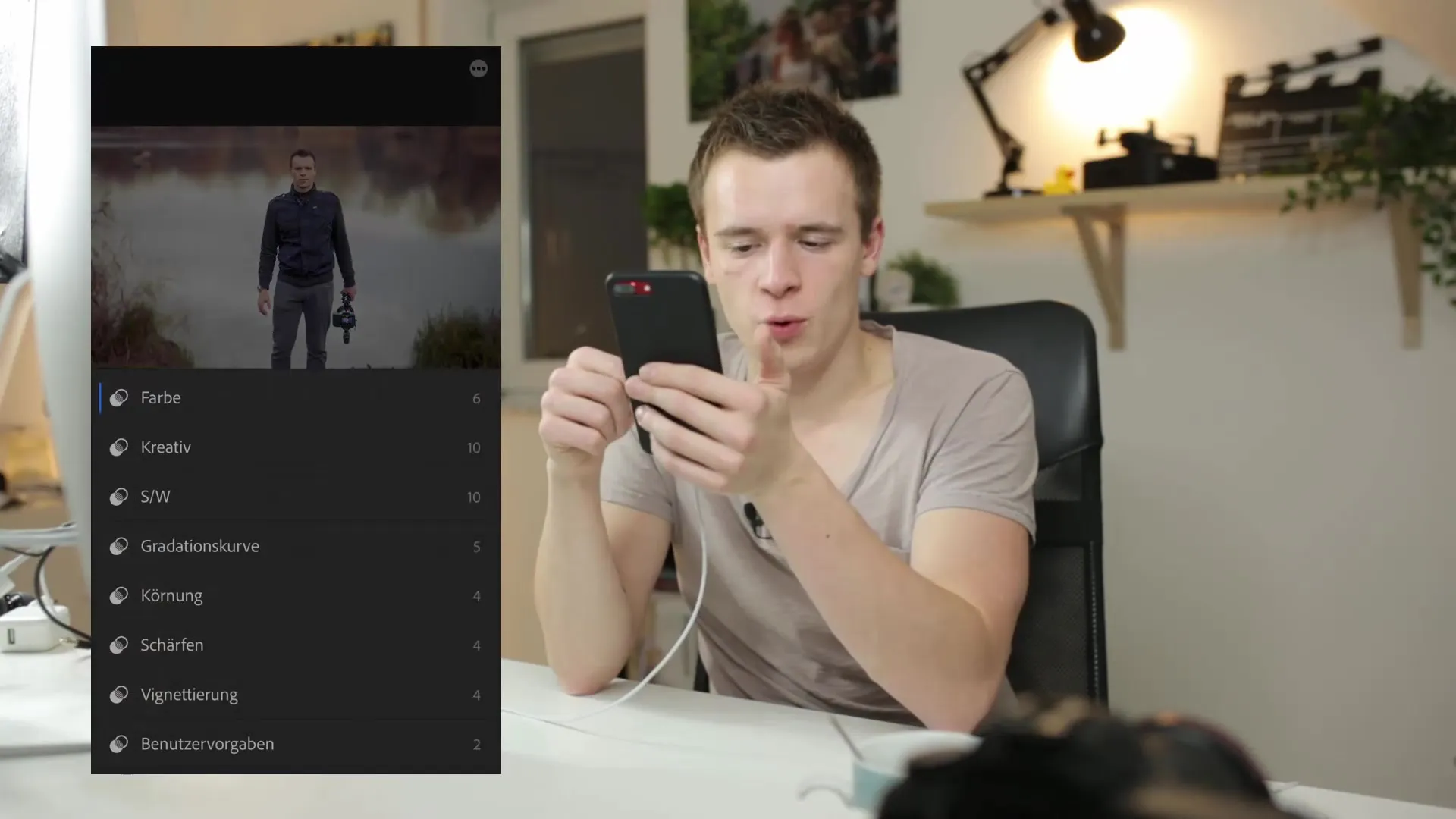
Another impressive feature is the ability to transfer your edits from one image to another. Scroll in the editing bar to the right and choose "Previous". You can decide whether only the corrections or all settings, including cropping and perspective, should be applied. This makes editing a series of images more efficient.
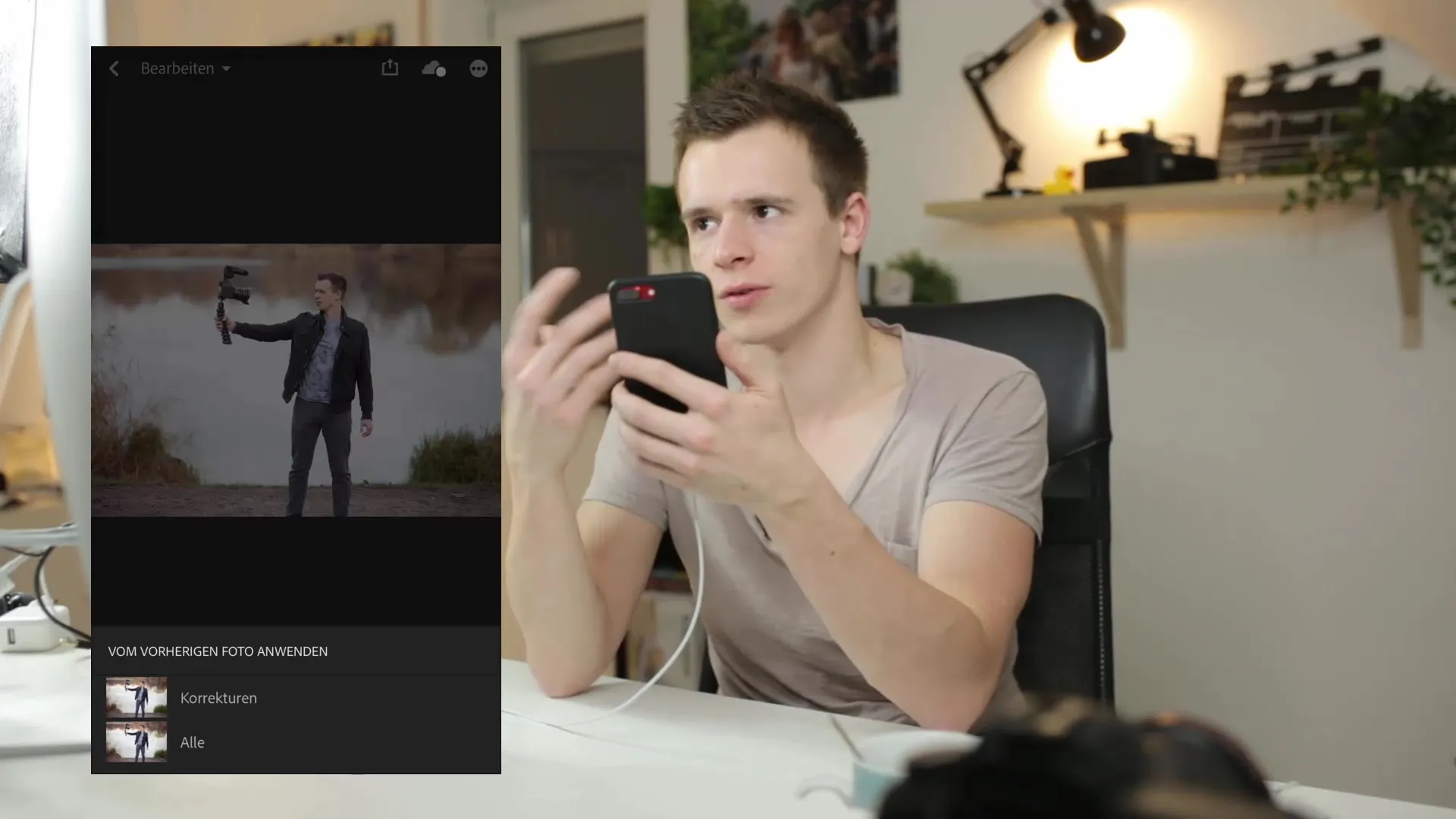
Now that you know all the editing options, you can export and share your image. You can do this directly through the mobile app, which is especially convenient when you are on the go and want to share your photos immediately.
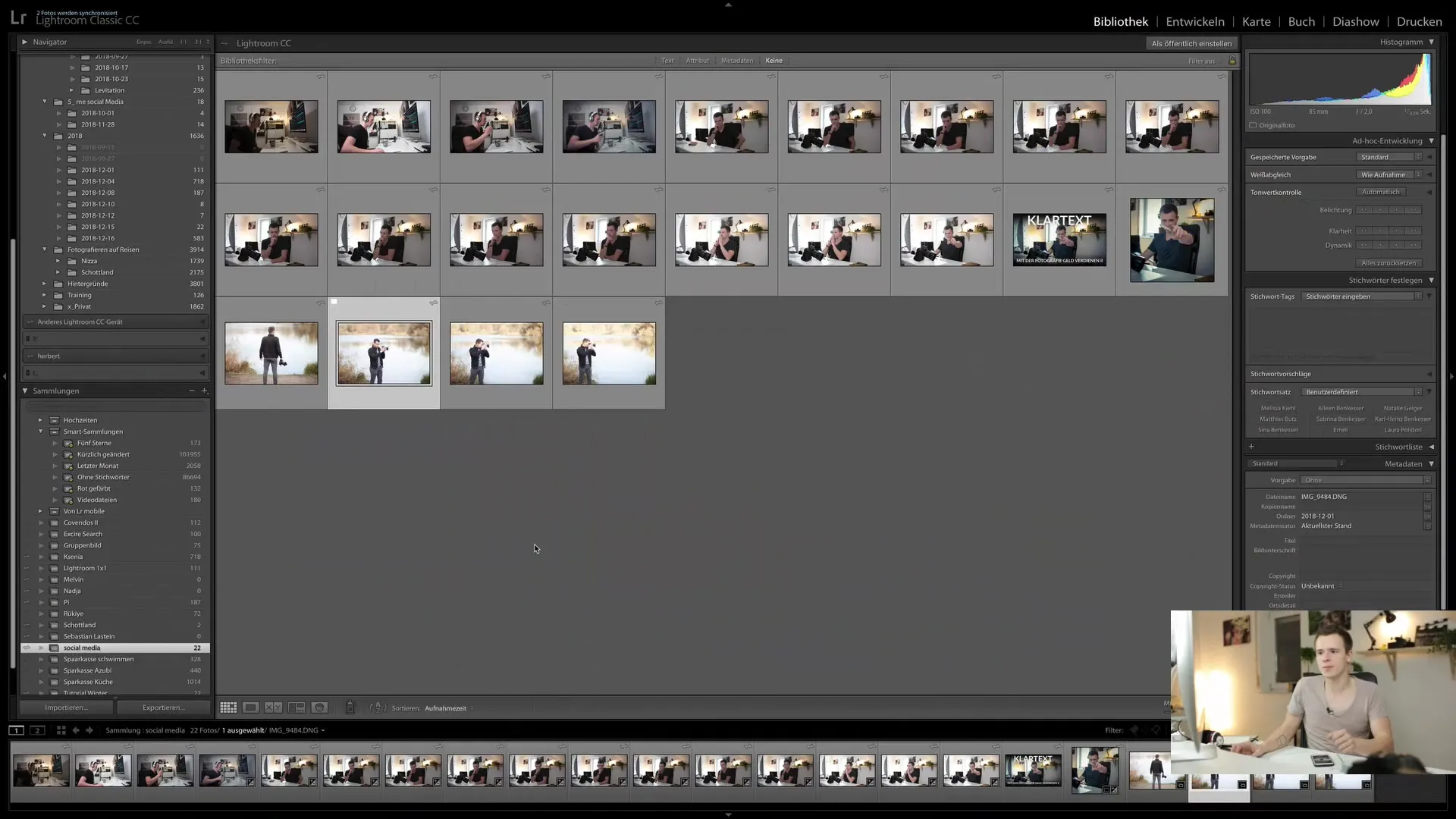
Finally, I want to emphasize how important it is to consider the color accuracy of your device. Some smartphones may have variations in colors and light conditions, so it is advisable to check the results on a calibrated monitor before publishing them.
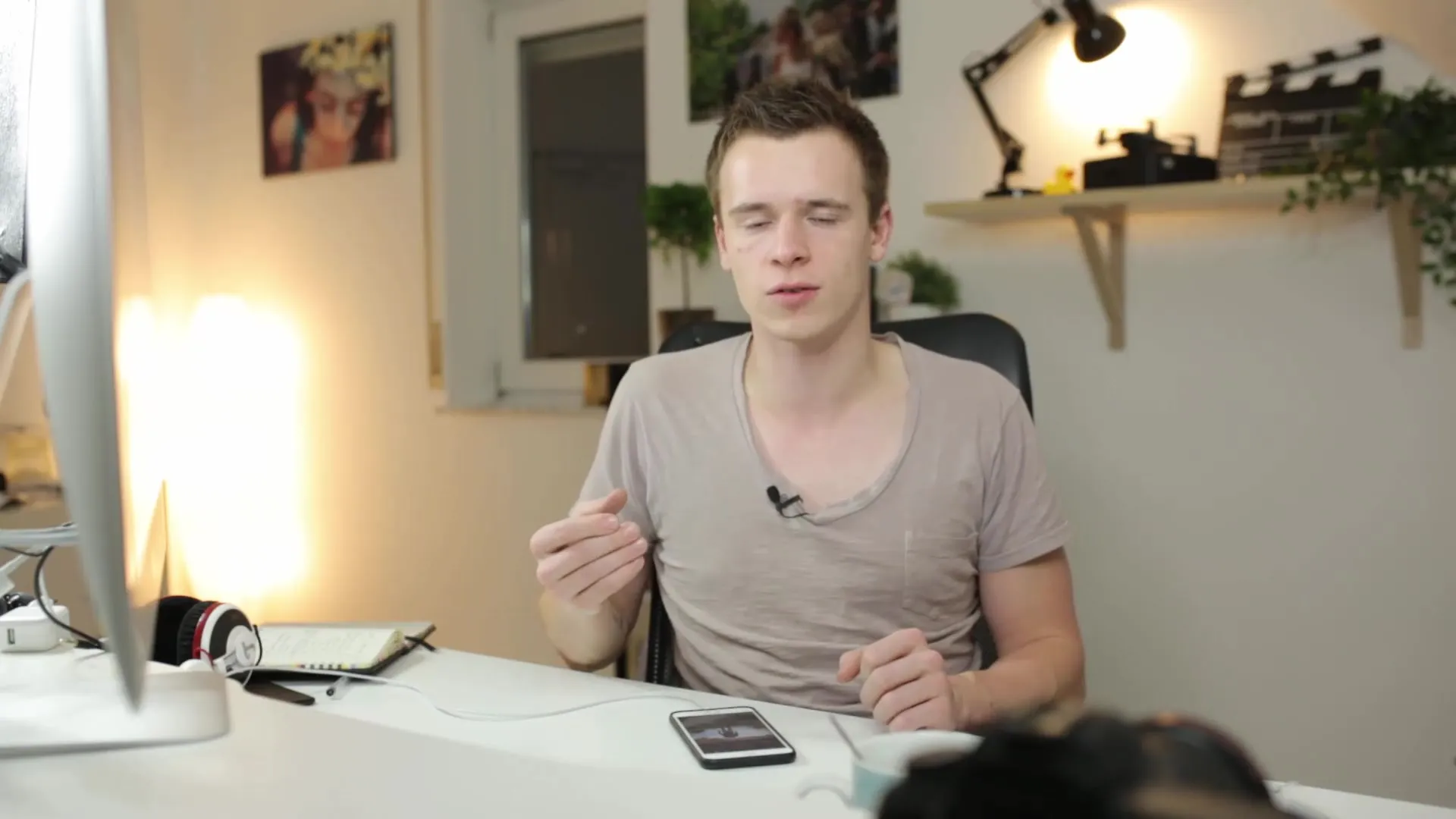
Summary
In this guide, you have learned how to effectively use Lightroom Mobile to edit your images. From various editing tools to synchronization capabilities between devices - the app is a powerful tool for photography enthusiasts. Use these features to take your photography to the next level!
Frequently Asked Questions
What is Lightroom Mobile?Lightroom Mobile is a photo editing app used on smartphones.
Which editing tools are available in Lightroom Mobile?You can use tools such as the Healing Brush, Radial Filter, and Graduated Filter.
Can I synchronize my edits between Lightroom Mobile and the desktop version?Yes, you can sync your edits to efficiently work on your projects.
How can I use the lens correction feature in the app?You can enable lens correction to minimize distortions and achieve a harmonious image.
Is color accuracy reliable on smartphones?There may be differences in color accuracy. Be sure to check your images on a calibrated monitor.


